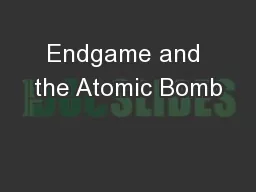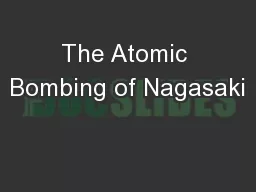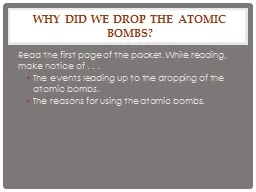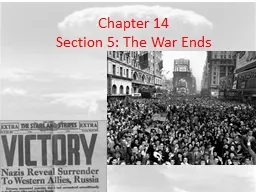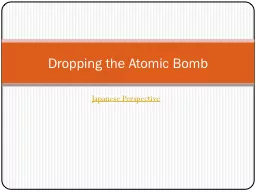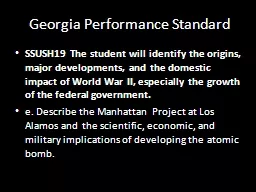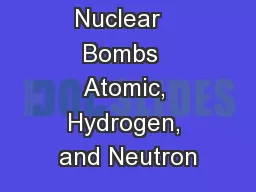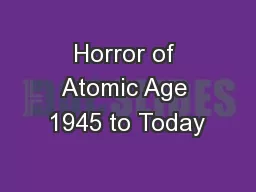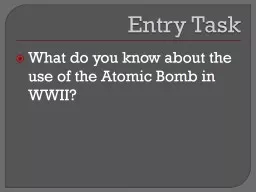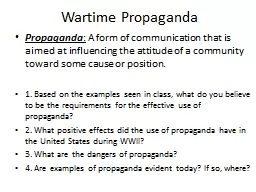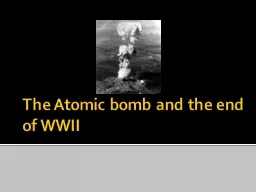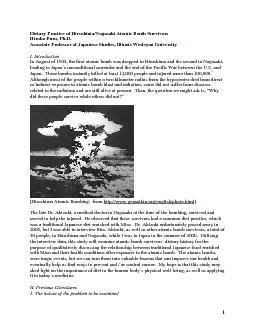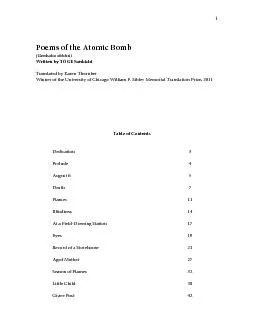PPT-Endgame and the Atomic Bomb
Author : danika-pritchard | Published Date : 2017-04-17
The Battle of the Bulge December 1944 Hitlers desperate response to the advance of the Allied forces after DDay Attack came through the Ardennes Forest intended
Presentation Embed Code
Download Presentation
Download Presentation The PPT/PDF document "Endgame and the Atomic Bomb" is the property of its rightful owner. Permission is granted to download and print the materials on this website for personal, non-commercial use only, and to display it on your personal computer provided you do not modify the materials and that you retain all copyright notices contained in the materials. By downloading content from our website, you accept the terms of this agreement.
Endgame and the Atomic Bomb: Transcript
Download Rules Of Document
"Endgame and the Atomic Bomb"The content belongs to its owner. You may download and print it for personal use, without modification, and keep all copyright notices. By downloading, you agree to these terms.
Related Documents

